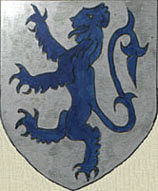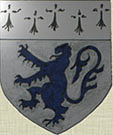Thomas Pattinson, Skelton Saddler and Bell Bros, Ironmasters.
|
The following scans have been contributed by Sue Mackechnie of Glasgow. She is the Great Great Great Grand-daughter of Zachariah
Wilson. The story of his macabre death on the North Skelton Railway line and later similar death of his son is told on Page 22.
The scans are of old orders and receipts from the 1870s and 1880s sent from Bell Bros, Ironmasters and Morrison Co to Thomas Pattinson,
Saddler of Skelton for various items used in the local Ironstone mines.
Sue says that her father found them some 40 years ago in a place that looked like a "cobblers" just off the Green in Skelton while working
there as an electrician, saving them from destruction by other workmen who were interested only in tearing off the old postage stamps.
They will eventually be offered to the Skinningrove Mining Museum.
Thomas Pattinson, who has signed some of the papers shown below, appears in Slater's Directory for Skelton of 1876 and on the 1881 census
he is listed as a Saddler, employing 2 men.
He was then aged 69 and living at 15 High St, Skelton with his wife Ellinor, aged 64. They were both natives of nearby Guisborough.
By the time of the 1901 census the business had been taken over by his son, Henry, who is listed as Saddler, Harness maker, aged 56.
A directory of 1935, when the age of dependency on the horse was long gone, shows that Thomas's Grandson, another Henry, was still working
as a Saddler at the same address.
Among the items ordered are "Hame sticks" and "Hame straps". Hame sticks are the curved pieces that fit either side of a draught horse's
collar and Hame straps that part of the harness that attaches to them. Hames can be of iron or even
fancy brass for parades etc. For pit horses they would be of wood and possibly crafted to fit individual cart horses. The Skelton Saddler was
their made-to-measure tailor. These poor animals lived their lives underground in the dark, with only a short holiday in the fields
above, hauling the heavy tubs of iron ore from the face to the pit shaft bottom. They were guided by horse drivers, usually young
teenage lads
|
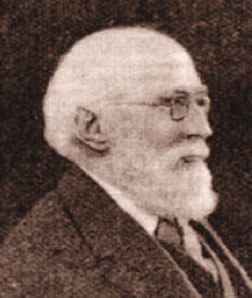
Thomas Hugh Bell,
1844 to 1931.
|
and all were involved in many mining accidents.
The information about hames comes from Terry Bannister, who lived at North Terrace, on Skelton Cross Green.
He suggests that the Saddler's workshop could have been next to the old Police Station on South Terrace.
This building, he says, was empty during the War and later used by Gladders Dairy.
Most of the orders and payments are signed by Thomas Hugh Bell and they show the large business empire that the Bell Brothers firm had
built in this area;
a monopoly of vertical integration with the Iron and Steel Works at Port Clarence supplied by their own Coal mines in Durham and
Ironstone mines in East Cleveland.
The technical brain was Thomas's father Sir Lowthian Bell, who gained fame through much innovation in the Industry.
Lowthian's brother was John Bell, who built Rushpool Hall in Skelton, where the brothers owned Shaft and Park Ironstone mines.
In the 1881 census Thomas Hugh Bell was living at Albion Villa, Saltburn.
Two payment slips are from Morrison & Co, who owned Brotton Ironstone Mine and are signed by the Manager at the time, G Taylor.
|
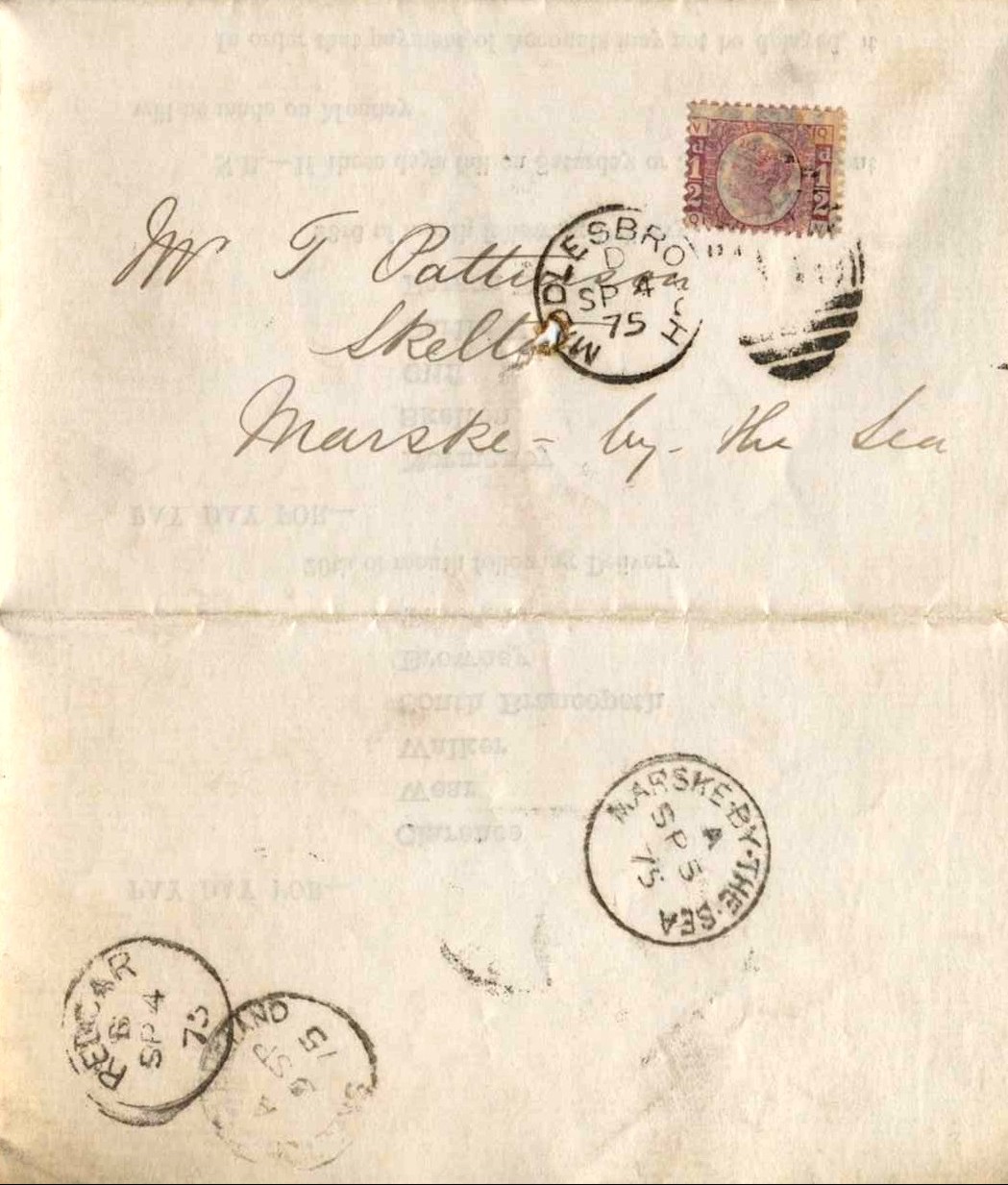
Order dated September 1875.
|
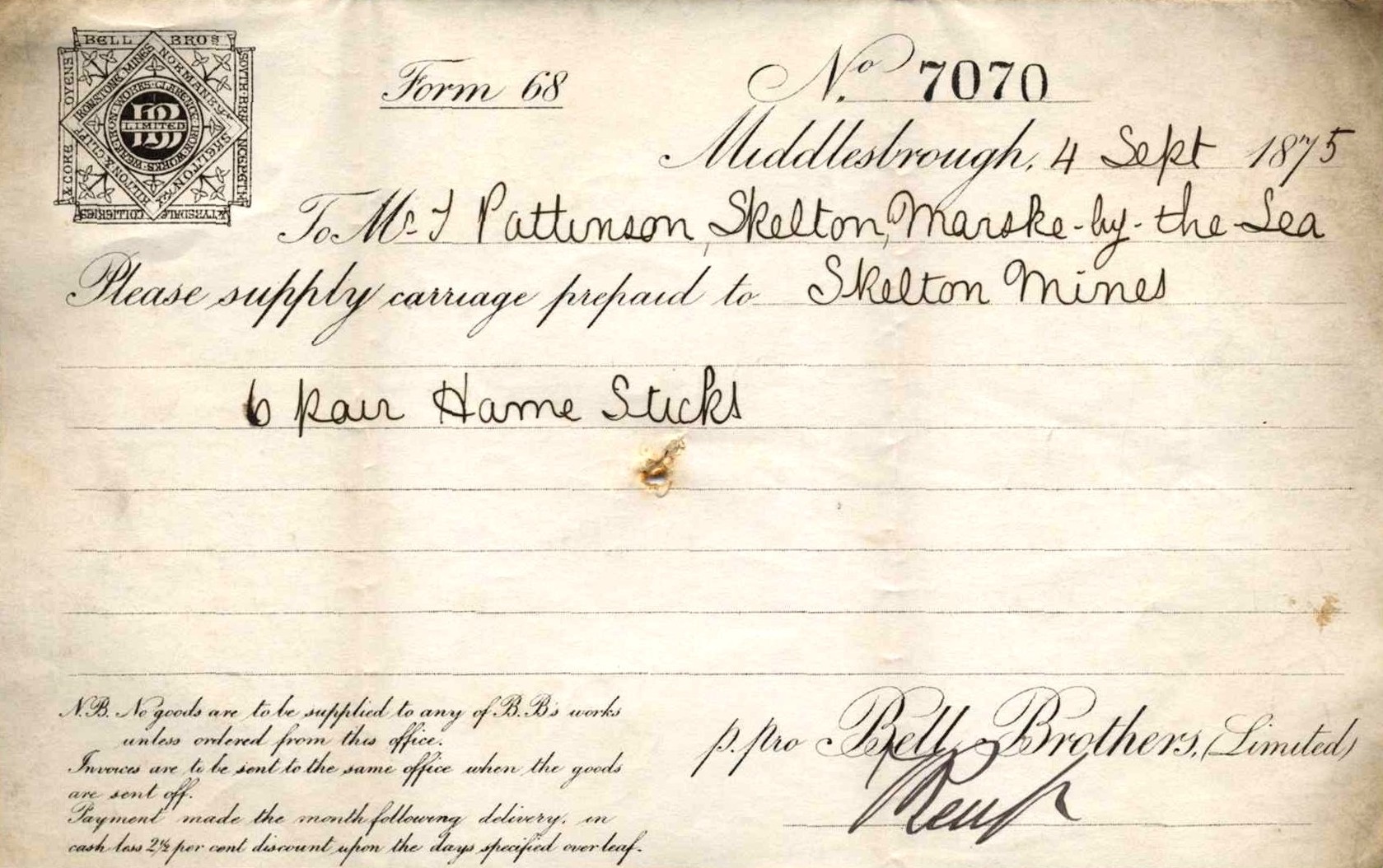
Order dated September 1875.
|

Back of Order dated September 1875.
|

Order dated January 1876.
|

Back of Order dated January 1876.
|
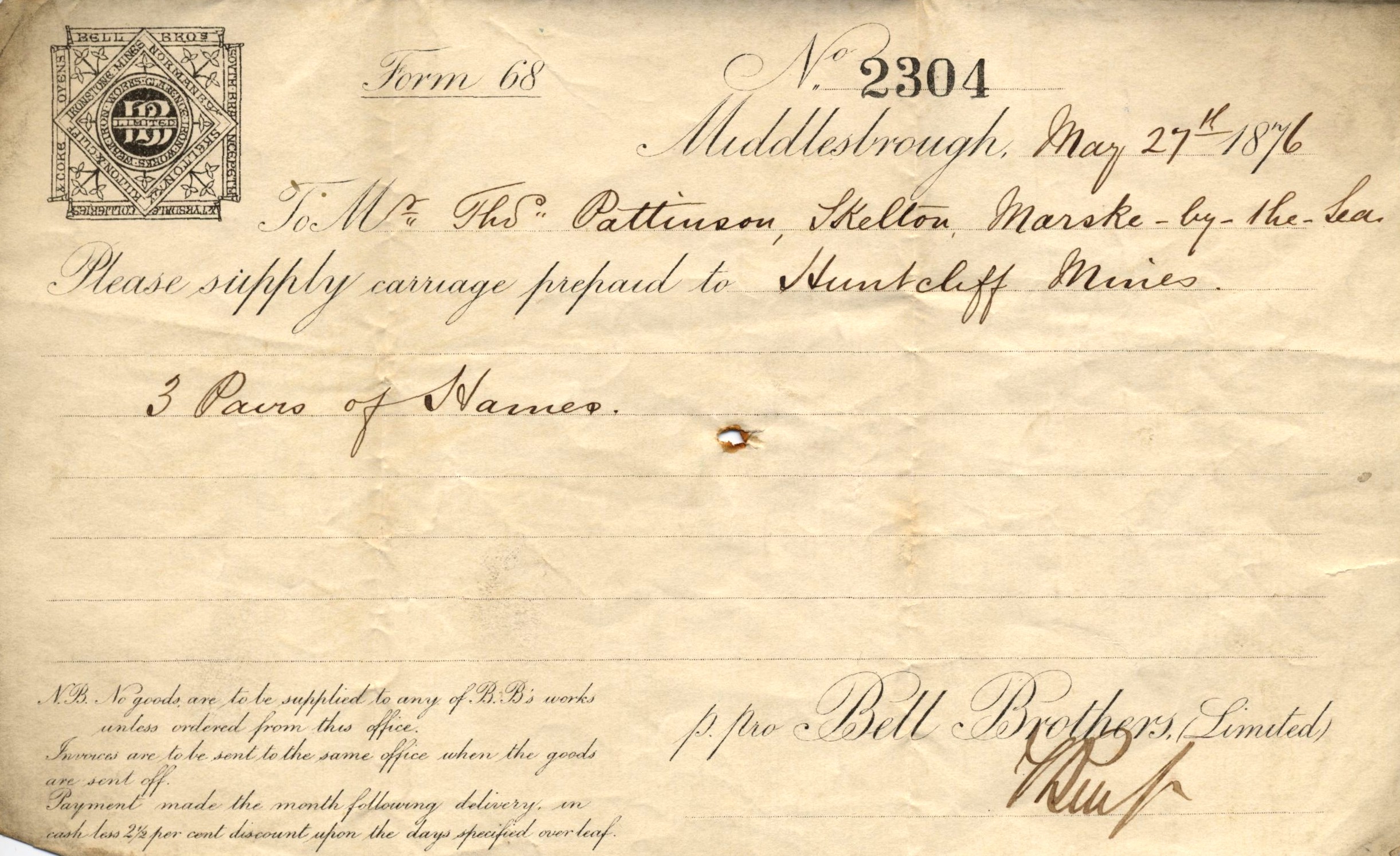
Order dated May 1876.
|

Payment dated December 1878.
|

Order dated August 1882.
|

Order dated August 1882.
|

Back of Order dated August 1882.
|
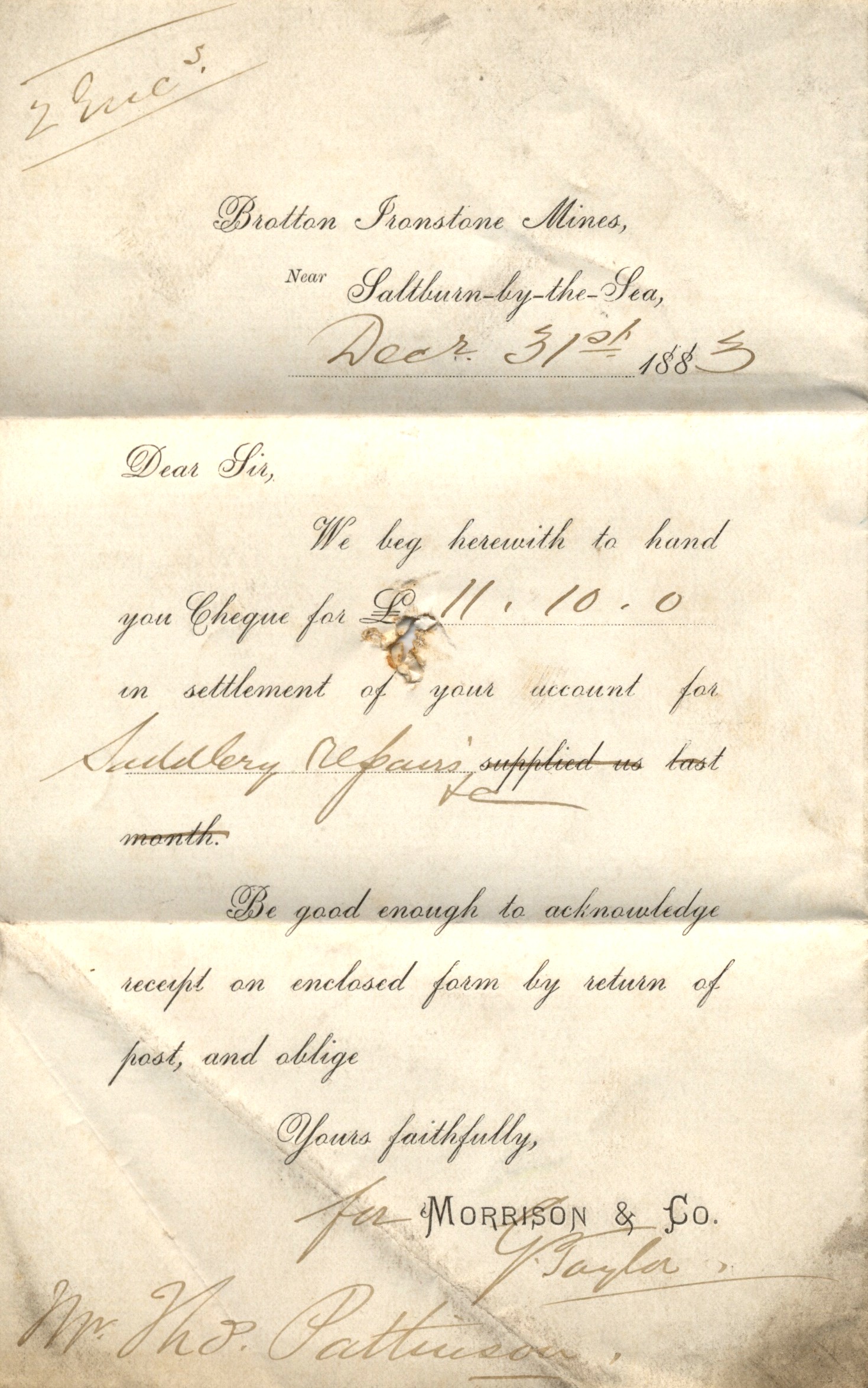
Payment dated December 1883.
|
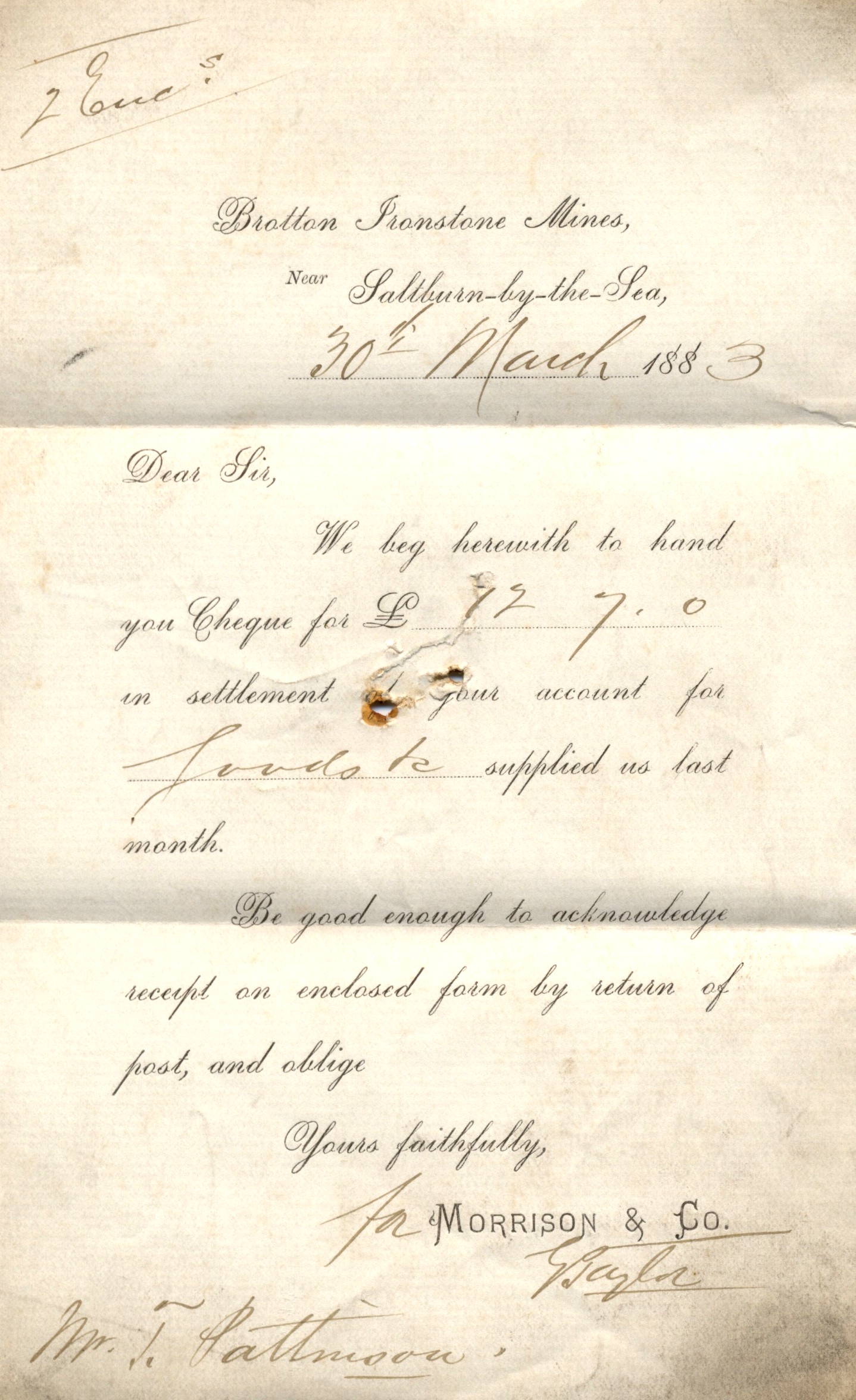
Payment dated March 1883.
|
|
